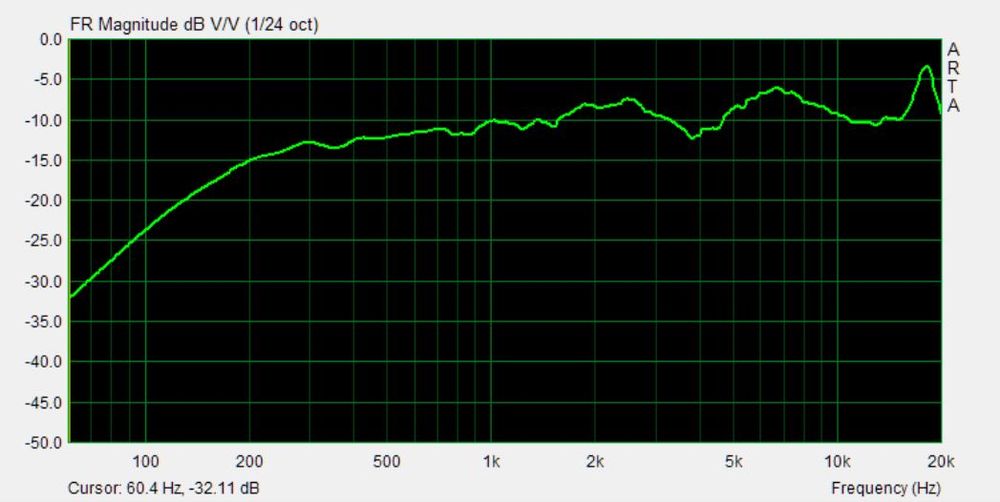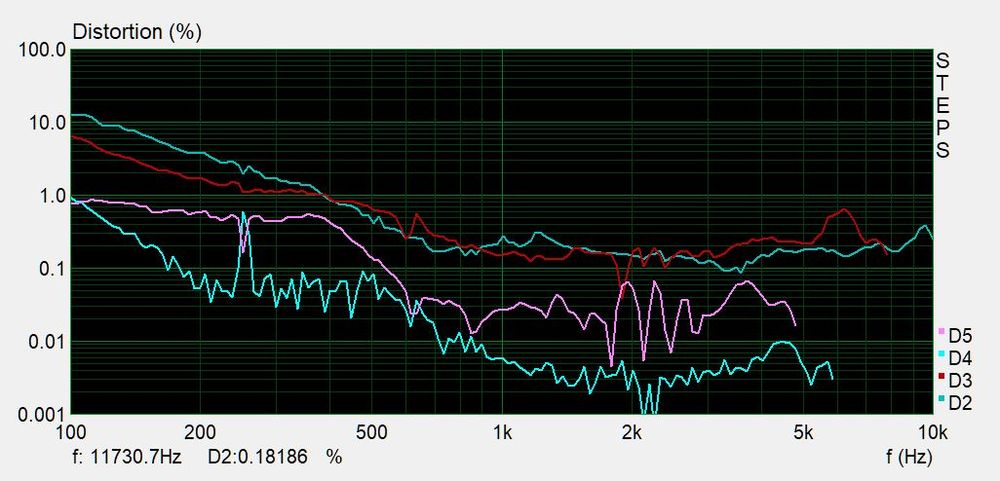TC5FC07-04

When it comes to tiny drivers, that you can use in ported enclosures, the choices are few and far between. The W1-2121S, from Tang Band, used in the Aliband and 3DTB designs, is one of them but it's not cheap. The TC5FC07, on the other hand, is. As soon as Tymphany released it it caught my eye. Small, reasonably flat frequency response, extention to 20kHz and T/S parameters optimised for use with passive radiators in small boxes. The idea is to give them an extended bass shelf (EBS) alignment and decent extension below 100Hz. The W1-2121S manages around 60Hz in the 3DTB and these simulate to give extension to around 70hz. Not bad from a speaker no bigger than a golf ball. The EBS alignment also increases the power handling of such a speaker by reducing excursion around the tuning frequency.
Most full range drivers are designed for applications where no box will be used. That is in TVs, or kiosk baffles/fronts, where the driver will be mounted on a baffle but have no box behind it. To that end they usually have a Qts no lower than 0.7 and often going up to 1.2. This is good for boxless applications but useless for getting as much bass as possible out of a tiny cabinet. Most applications suit the high Qts drivers, but small, passive radiator assisted, Bluetooth speakers are becoming more popular and they need drivers like this.
Bluetooth speakers might be rather popular but at the same time they need to be cost effective. Tang Band's W1-2121S is excellent but it ain't cheap. The TC5 is less than half the price depending on where you get them from.
Most full range drivers are designed for applications where no box will be used. That is in TVs, or kiosk baffles/fronts, where the driver will be mounted on a baffle but have no box behind it. To that end they usually have a Qts no lower than 0.7 and often going up to 1.2. This is good for boxless applications but useless for getting as much bass as possible out of a tiny cabinet. Most applications suit the high Qts drivers, but small, passive radiator assisted, Bluetooth speakers are becoming more popular and they need drivers like this.
Bluetooth speakers might be rather popular but at the same time they need to be cost effective. Tang Band's W1-2121S is excellent but it ain't cheap. The TC5 is less than half the price depending on where you get them from.

Very reasonable frequency response and easy to work with. It's essentially flat within +-2.5dB with the lower end roll off associated with the lower Qts design. Put in a suitable enclosure this could be used without any EQ and sound good, especially if on a wide flat baffle where the lack of baffle-step compensation would go unnoticed.
For the best results, in an EBS alignment, you would need to apply some EQ to account for the shelved off bass. Most Bluetooth speakers have some DSP capabilities built into them anyway and with a bass shelf, and two notches, you're looking at an essentially flat loudspeaker.
Unlike the PMT-2040N, tested here, these drivers could cope with an initial test signal of 2.83Vrms. And while that's a good sign the same caveats still apply. This is a small driver designed to provide as wide a bandwidth as possible at low listening levels.
For the best results, in an EBS alignment, you would need to apply some EQ to account for the shelved off bass. Most Bluetooth speakers have some DSP capabilities built into them anyway and with a bass shelf, and two notches, you're looking at an essentially flat loudspeaker.
Unlike the PMT-2040N, tested here, these drivers could cope with an initial test signal of 2.83Vrms. And while that's a good sign the same caveats still apply. This is a small driver designed to provide as wide a bandwidth as possible at low listening levels.

Nevertheless the results here are very good with very low levels of distortion above 900Hz and no blips, or anomalies, to speak of. Obviously distortion rises significantly below this but we're talking about a driver that has roughly the same radiating area as a 1" dome tweeter. This is fairly loud though. The driver having a mid-band sensitivity of 86dB at 1 meter for 2.83Vrms.

Above is the HD at 1Vrms.

And finally here are the results at 0.28Vrms.
If used as intended this is a very low distortion driver. The bass distortion will only improve with a passive radiator reducing the load placed on the main driver.
A pair would fill a small room with music and sound fairly good while doing so. Used near-field along with a tablet, or phone, for viewing Netflix they should sound pretty great.
To test these I 3D printed a small baffle that the speaker then mounted to. The measurements were taken at about 8cm away from the driver, with a densely stuffed chamber sealed behind it. The chamber was large in volume relative to the drivers parameters. 8cm may not sound like a lot but with such a small diaphragm you're pretty much far-field.
If used as intended this is a very low distortion driver. The bass distortion will only improve with a passive radiator reducing the load placed on the main driver.
A pair would fill a small room with music and sound fairly good while doing so. Used near-field along with a tablet, or phone, for viewing Netflix they should sound pretty great.
To test these I 3D printed a small baffle that the speaker then mounted to. The measurements were taken at about 8cm away from the driver, with a densely stuffed chamber sealed behind it. The chamber was large in volume relative to the drivers parameters. 8cm may not sound like a lot but with such a small diaphragm you're pretty much far-field.

